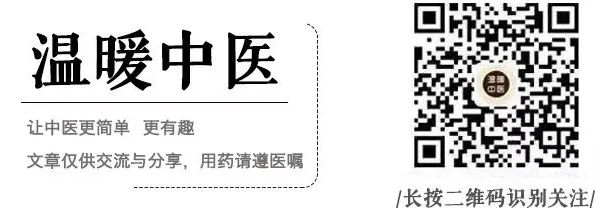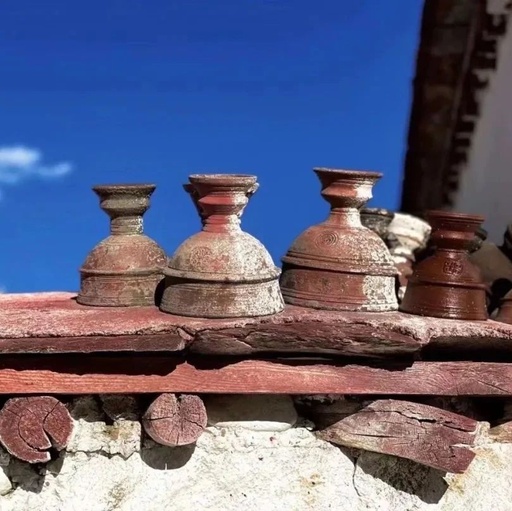Today, we will discuss a medicine called Yin Qiao Jie Du Wan (Yin Qiao Detoxification Pill), which was developed by the renowned expert in warm diseases, Wu Ju Tong.
Wu Ju Tong was born in the southern region, which is prone to epidemic heat diseases, specifically in Jiangsu. In the 58th year of the Qianlong reign, which corresponds to 1793, a major epidemic occurred, leading to many deaths due to improper treatment. Wu Ju Tong utilized his established method of Xin Liang Jie Biao Fa (Acrid and Cool Exterior-Releasing Method) to rescue patients effectively, thus gaining significant recognition.
The formula Yin Qiao San (Yin Qiao Powder) emerged from this foundation, including common cold medications such as Sang Ju Gan Mao Pian (Sang Ju Cold Tablets) and Huo Xiang Zheng Qi San (Huo Xiang Correct Qi Powder), all of which were developed by him. After over two hundred years of clinical testing, these remain highly effective traditional Chinese medicines for treating colds.
Colds are very common, and there are many types of traditional Chinese medicines for treating colds, but selecting the right one is not easy. The first step is to distinguish whether it is a cold caused by wind-cold or wind-heat. In TCM, treatment must differentiate between Wind-Cold Cold and Wind-Heat Cold; if confused, the treatment will certainly be ineffective.The Yin Qiao Jie Du Wan is specifically designed for Wind-Heat Cold, meaning this medicine has a cooling nature, so it is essential to examine the tongue before taking it.The characteristics of Wind-Heat Cold include a red tongue body, particularly at the edges and tip, which are governed by the heart and lungs. When there is heart fire or lung heat, these areas will appear red, especially in children. The tip of the tongue is associated with the heart; adults may experience a red tip due to mental stress, heart fire, or insomnia, but for children, a red tip primarily indicates lung heat.The Yin Qiao Jie Du Wan is often suitable for colds in spring, as spring is the season when yang energy gradually emerges, and the body’s yang energy strengthens after the winter’s dormancy. Colds during this time are often heat-related, referred to in TCM as Spring Pestilence, which differs from autumn colds.In autumn, the cold air becomes more intense, and the body’s pores gradually close. Thus, there is a saying in China, “Spring Wrap, Autumn Freeze“; the reason for freezing is to promote the closure of pores through active cold stimulation, establishing a barrier against cold evils before they arrive. During this time, it is also easy to catch a cold, which is predominantly of the wind-cold nature.When suffering from this type of cold, individuals feel very sensitive to wind and cold, do not sweat, feel tight all over, and may have clear, thin nasal discharge. The cause is often inappropriate clothing or sudden cold weather. In this case, common TCM medicines such as Gan Mao Qing Re Chong Ji (Cold Medicine for Clearing Heat) or Zheng Chai Hu Chong Ji (Zheng Chai Hu Decoction) or Tong Xuan Li Fei Wan (Tong Xuan Lung Regulating Pill) are more suitable. These are among the few warm-type cold medicines in TCM, commonly used in autumn and winter, which can induce sweating and expel cold evils, providing relief.Wind-heat colds rarely present with the same lack of sweating as wind-cold colds; they usually have slight sweating but do not have a high temperature despite sweating. Instead, they may present with fever, dry mouth, thirst, and sore throat.If diagnosed by Western medicine, it is often identified as tonsillitis or upper respiratory tract infection. The appearance of these symptoms indicates that the wind-heat evil has invaded the body, necessitating the use of Yin Qiao Jie Du Wan, which contains both heat-clearing herbs and fever-reducing properties. Wu Ju Tong created it to treat epidemics far more severe than Wind-Heat Cold, demonstrating its clinical reliability.Wu Ju Tong noted in the original formula to use Fresh Reed Stem Decoction; the Reed Root available in pharmacies can achieve the same effect, with fresh being preferable, but dried can also be used. Using 10 grams of reed root and 10 grams of white grass root to decoct and take with Yin Qiao Jie Du Wan enhances its heat-clearing effect. During cold outbreaks, one can also decoct reed root and white grass root in this ratio to replace tea, drinking it daily. Both herbs enter the lung meridian, have a sweet and cold nature, and can significantly improve symptoms of dryness and internal heat even when not experiencing a cold.Famous Qing Dynasty physician Cheng Guo Peng stated in his work Yi Xue Xin Wu: “If a person has a history of internal heat and is then constrained by wind-cold, with heat inside and cold outside, it forms the state known as ‘cold wrapping fire.'”This means that if a person has internal heat and then encounters wind-cold, the heat remains inside while the cold is outside, leading to the condition referred to in folk sayings as “cold wrapping fire.”In TCM, it is said that “the lungs and skin are interrelated”; the skin has a function of dissipating heat. If this function is obstructed, heat will accumulate internally, particularly in the lung meridian.Internal heat in a person shares characteristics with natural fire, as both involve burning, leading to redness and heat phenomena. When there is heat, nasal discharge and phlegm are generally yellow; in severe cases, phlegm coughed up in the morning can be brownish-red, resulting from the “lung fire” after a night of burning, concentrating secretions in the lungs and throat, which is a characteristic of “lung fire.”Symptoms of colds belonging to the “cold wrapping fire” type include fever, tight skin all over, and little sweating—indicating exterior cold; simultaneously, there may be dry stools, sore throat, and a sensation of heat in the respiratory tract, with yellow or even red nasal discharge and phlegm, and a red tongue body, along with persistent thirst and dry throat—indicating internal heat. Treating “cold wrapping fire” is more complex than simply catching a cold; if internal heat is not cleared, the cold is difficult to resolve.For treating “cold wrapping fire” with TCM, one generally uses Gan Mao Qing Re Chong Ji or Tong Xuan Li Fei Wan, both of which are warm exterior-releasing medicines that can induce slight sweating to disperse the cold trapped at the surface. At the same time, it is essential to combine with Huang Lian Shang Qing Wan or Shuang Huang Lian Kou Fu Ye to clear internal heat, and sometimes even a mild laxative is needed to address both internal and external conditions.Another condition involves the presence of warm evils with internal heat, meaning there is heat both inside and outside; in this case, Yin Qiao Jie Du Wan should be taken, along with some internal heat-clearing herbs, such as Xing Qing Ning tablets made from rhubarb to ensure smooth bowel movements, allowing the lung heat to be expelled.In TCM, it is said that “the lungs and large intestine are interrelated,” so ensuring bowel movements is crucial. For patients with fever or respiratory infections, even with anti-inflammatory medications, if bowel movements are not smooth, it is challenging to lower body temperature. This is because the only pathway for lung fire is through the large intestine, and bowel movements are also an important means of dissipating heat from the body; only when bowel movements are smooth can lung qi be cleared, and body temperature can decrease.Therefore, unless one has a weak spleen and is prone to diarrhea or loose stools, whether it is a Wind-Cold Cold or a Wind-Heat Cold, one must ensure bowel movements are smooth. One can use a laxative with Xing Qing Ning combined with Yin Qiao Jie Du Wan or Gan Mao Qing Re Chong Ji to achieve a coordinated internal and external treatment.Author: Tong Tong

